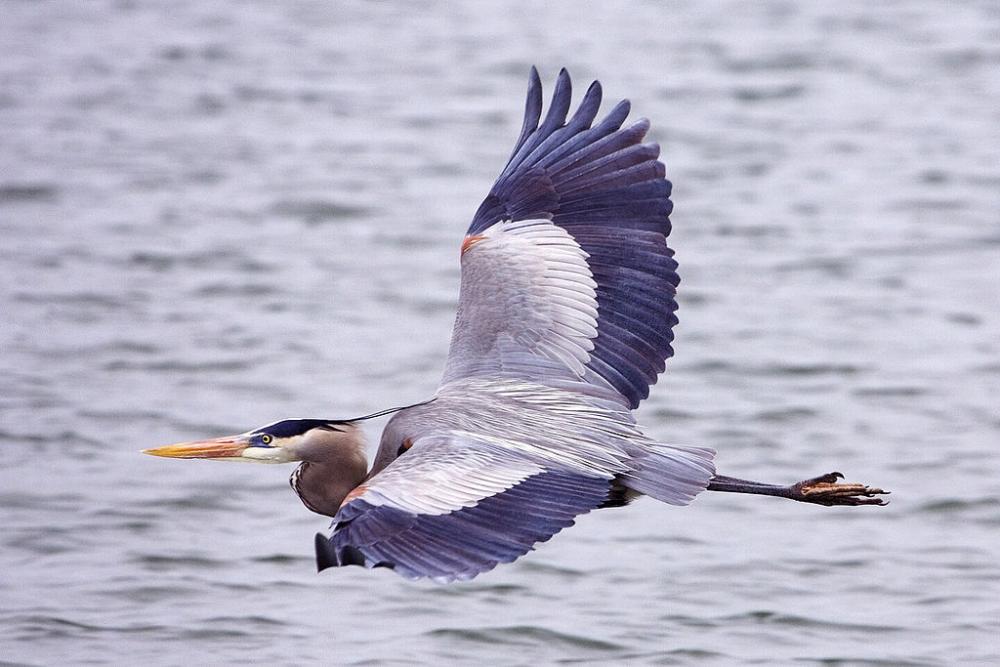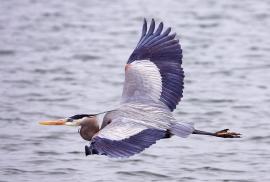Guide to Boreal Birds
Overview
An adaptable bird whose large size enables it to feed on a variety of prey-from large fish and frogs to mice, small birds, and insects-the Great Blue has one of the widest ranges of any North American heron. This wide choice of food enables it to remain farther north during the winter than other species, wherever there is open water, although such lingering birds may fall victim to severe weather. Most Great Blues nest in colonies in tall trees; their presence is often unsuspected until the leaves fall and the groups of saucer-shaped nests are exposed to view. In late summer young herons disperse widely and may be encountered at small ponds, in mountain waters, or even in backyard pools-wherever fish are plentiful.
Description
39-52" (99-132 cm). W. 5'10" (1.8 m). A common large, mainly grayish heron with a pale or yellowish bill. Often mistaken for a Sandhill Crane, but flies with its neck folded, not extended like that of a crane. In southern Florida an all-white form, "Great White Heron," differs from Great Egret in being larger, with greenish-yellow rather than black legs.
Voice
A harsh squawk.
Nesting
3-7 pale greenish-blue eggs placed on a shallow platform of sticks lined with finer material, usually in a tree but sometimes on the ground or concealed in a reedbed. Nests in colonies.
Habitat
Lakes, ponds, rivers, and marshes.
Range/Migration
Breeds locally from coastal Alaska, south-central Canada, and Nova Scotia south to Mexico and West Indies. Winters as far north as southern Alaska, central United States, and southern New England. Also in Galapagos Islands.



